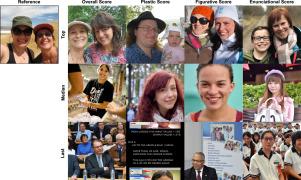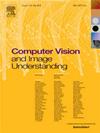For a semiotic AI: Bridging computer vision and visual semiotics for computational observation of large scale facial image archives
IF 4.3
3区 计算机科学
Q2 COMPUTER SCIENCE, ARTIFICIAL INTELLIGENCE
引用次数: 0
Abstract
Social networks are creating a digital world in which the cognitive, emotional, and pragmatic value of the imagery of human faces and bodies is arguably changing. However, researchers in the digital humanities are often ill-equipped to study these phenomena at scale. This work presents FRESCO (Face Representation in E-Societies through Computational Observation), a framework designed to explore the socio-cultural implications of images on social media platforms at scale. FRESCO deconstructs images into numerical and categorical variables using state-of-the-art computer vision techniques, aligning with the principles of visual semiotics. The framework analyzes images across three levels: the plastic level, encompassing fundamental visual features like lines and colors; the figurative level, representing specific entities or concepts; and the enunciation level, which focuses particularly on constructing the point of view of the spectator and observer. These levels are analyzed to discern deeper narrative layers within the imagery. Experimental validation confirms the reliability and utility of FRESCO, and we assess its consistency and precision across two public datasets. Subsequently, we introduce the FRESCO score, a metric derived from the framework’s output that serves as a reliable measure of similarity in image content.

符号学人工智能:衔接计算机视觉和视觉符号学,对大规模面部图像档案进行计算观察
社交网络正在创造一个数字世界,在这个世界里,人类面孔和身体图像的认知、情感和实用价值正在发生变化。然而,数字人文学科的研究人员往往不具备大规模研究这些现象的能力。本作品介绍了 FRESCO(通过计算观察的电子社会中的人脸表征),这是一个旨在大规模探索社交媒体平台上图像的社会文化影响的框架。FRESCO 利用最先进的计算机视觉技术,按照视觉符号学的原理,将图像解构为数字变量和分类变量。该框架从三个层面对图像进行分析:造型层面,包括线条和颜色等基本视觉特征;具象层面,代表具体实体或概念;以及阐释层面,尤其侧重于构建观众和观察者的观点。通过对这些层面的分析,可以发现图像中更深层次的叙事层次。实验验证证实了 FRESCO 的可靠性和实用性,我们还在两个公共数据集中评估了 FRESCO 的一致性和精确性。随后,我们介绍了 FRESCO 分数,这是一个从框架输出中得出的指标,可作为图像内容相似性的可靠衡量标准。
本文章由计算机程序翻译,如有差异,请以英文原文为准。
求助全文
约1分钟内获得全文
求助全文
来源期刊

Computer Vision and Image Understanding
工程技术-工程:电子与电气
CiteScore
7.80
自引率
4.40%
发文量
112
审稿时长
79 days
期刊介绍:
The central focus of this journal is the computer analysis of pictorial information. Computer Vision and Image Understanding publishes papers covering all aspects of image analysis from the low-level, iconic processes of early vision to the high-level, symbolic processes of recognition and interpretation. A wide range of topics in the image understanding area is covered, including papers offering insights that differ from predominant views.
Research Areas Include:
• Theory
• Early vision
• Data structures and representations
• Shape
• Range
• Motion
• Matching and recognition
• Architecture and languages
• Vision systems
 求助内容:
求助内容: 应助结果提醒方式:
应助结果提醒方式:


